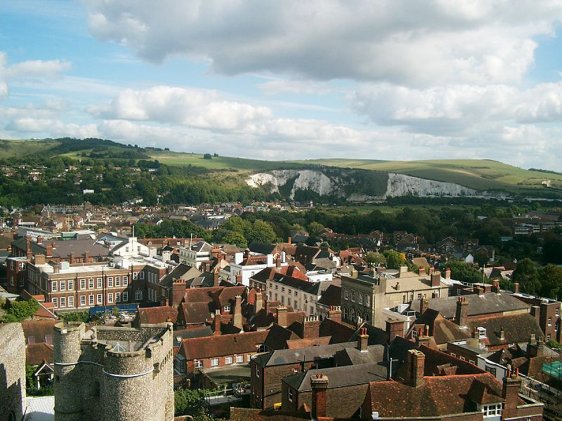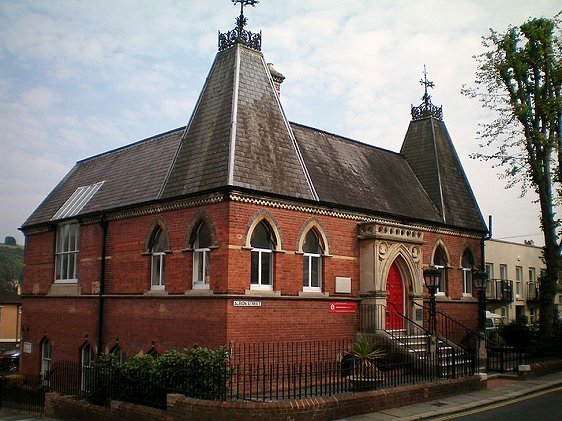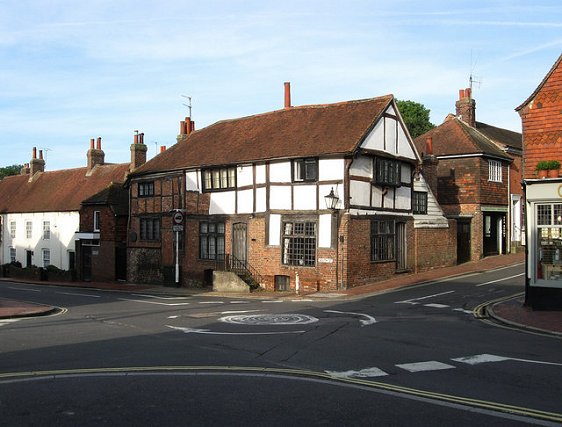 Lewes, East Sussex, England: Source: https://en.wikipedia.org/wiki/File:Lewes_wiki.jpg
Lewes, East Sussex, England: Source: https://en.wikipedia.org/wiki/File:Lewes_wiki.jpgAuthor: Almaasandersno

Lewes is the county town of East Sussex, England. A civil parish within the Lewes local government district, the town has a population of 16,000 people (2012 estimate). It is on the Greenwich Meridian, about seven miles to the north of Newhaven. The River Ouse flows through Lewes near the point where it meets the Winterbourne Stream.
 View from Lewes Castle: Source: https://commons.wikimedia.org/wiki/File:Blick_vom_Lewes_Castle1.jpg
View from Lewes Castle: Source: https://commons.wikimedia.org/wiki/File:Blick_vom_Lewes_Castle1.jpgAuthor: J. Steffen & Dominic Melang

The history of human habitation in the area around Lewes goes back to the Neolithic period. Historians believe that the Romans established the settlement of Mutuantonis here. During the Anglo-Saxon period, a motte-and-bailey castle was erected here.
Following Norman Conquest, William the Conqueror turned Lewes over to William de Warenne, 1st Earl of Surrey, who built Lewes Castle as well as the Priory of St Pancras. It received its town charter in 1148, granted by King Stephen.
The most important annual festival in Lewes is the Lewes Bonfire, a Guy Fawkes Night celebration, that is celebrated on 5th November. It is the largest and most famous Bonfire Night celebrations in the country.
 Lewes Old Library: Source: https://commons.wikimedia.org/wiki/File:Lewes_Old_Library.JPG
Lewes Old Library: Source: https://commons.wikimedia.org/wiki/File:Lewes_Old_Library.JPGAuthor: Charlesdrakew

Lewes introduced its own currency in 1789 and discontinued it in 1895. Then in September 2008, it reintroduced its own currency. The Lewes Pound is fixed at £1 Sterling, and can be used in approximately 130 shops in town. The banknote depicts on one side the picture of most famous resident of Lewis, the American founding father Thomas Paine, and on the other the picture of the South Downs.
Visiting Lewes
From London take the A21 road until Royal Tunbridge Wells, then continue on the A26 road until you arrive in Lewes. 16th century timber-framed house in Lewes: Source: https://commons.wikimedia.org/wiki/File:1_South_Street_-_geograph.org.uk_-_1450005.jpg
16th century timber-framed house in Lewes: Source: https://commons.wikimedia.org/wiki/File:1_South_Street_-_geograph.org.uk_-_1450005.jpgAuthor: Simon Carey

Places of Interest in Lewes
- Lewes Brooks: Site of biological interest forming part of the floodplain of the River Ouse. It is a habitat for water beetles and snails.
- Lewes Down: Site of biological interest.
- Southerham Works Pit: Site of geological interest, being a disused chalk pit where the fossilized remains of fish have been discovered.
- St John sub Castro: Northernmost church in the Old Town of Lewes.
- St Michael's Church: Church on High Street. It has a round tower with a shingled spire.
 Latest updates on Penang Travel Tips
Latest updates on Penang Travel Tips

Copyright © 2003-2025 Timothy Tye. All Rights Reserved.

 Go Back
Go Back